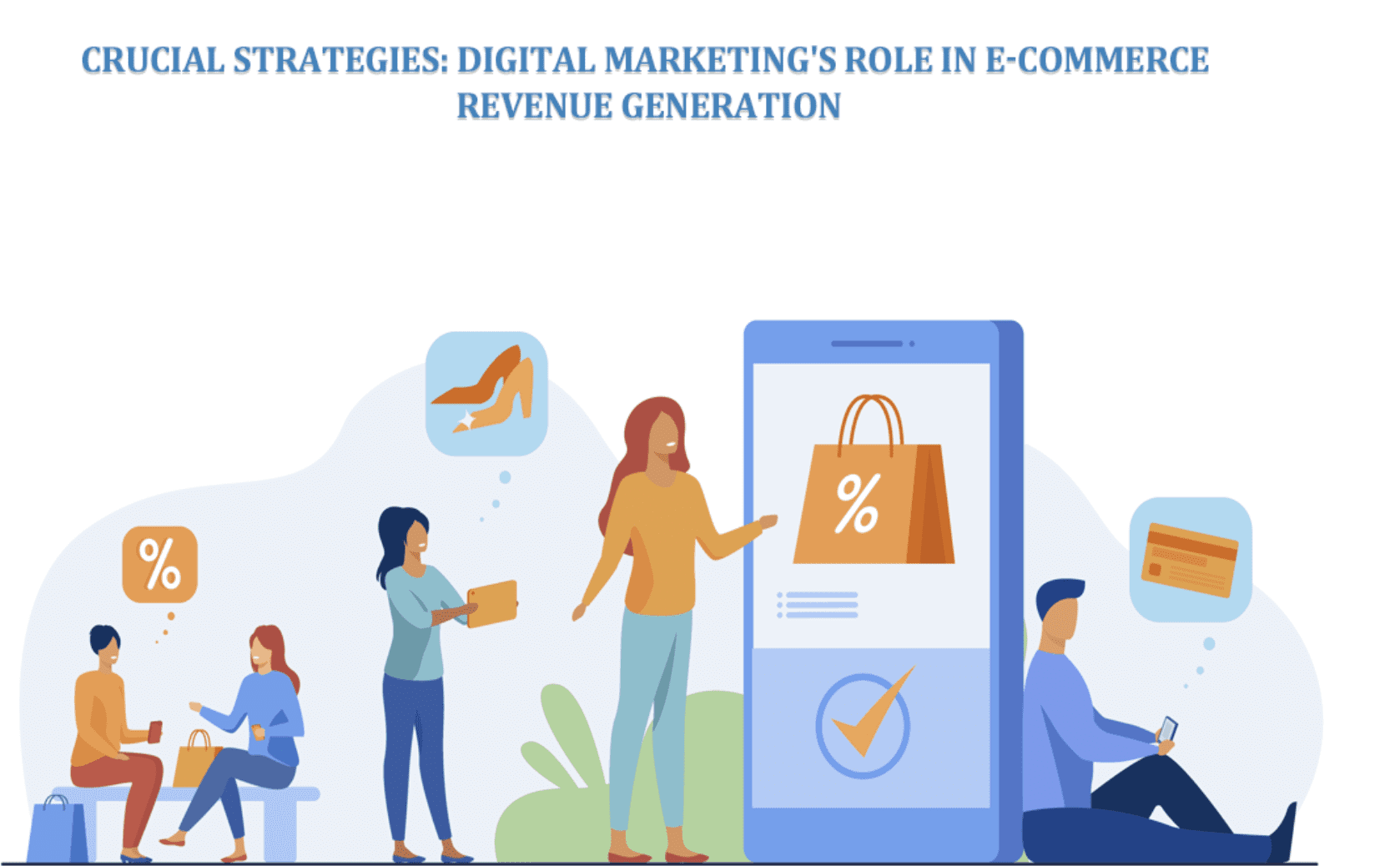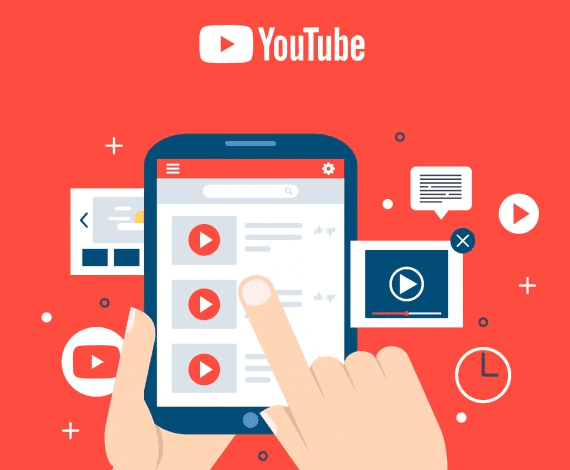
Can your online shop survive without being found? Probably not. Shoppers today flip through social media, scroll search results, and click through websites almost without thinking. When they land somewhere interesting, they expect fast product info, easy navigation, and a little personality.
Building that welcome mat is what folks mean by a strong digital presence. It’s no longer something you bolt on after the fact, it’s the starting line, not an add-on. One well-timed ad, a catchy email, or a helpful blog post can turn a bored scroller into a spending customer before they finish their morning coffee.
Role of Digital Marketing in E-commerce
Digital Marketing is just about using screens to shout, “Hey, look over here!” Instead of newspapers or radio jingles, the stage is search bars, inboxes, and TikTok feeds. Unlike a billboard that disappears after a glance, everything online is clickable and trackable.
Some key elements of Digital Marketing in e-commerce include:
- Search Engine Optimization (SEO): Improving your site’s visibility on Google.
- Pay-Per-Click (PPC) Ads: Running paid ads on multiple platforms
- Email Campaigns: Nurturing leads through personalized email sequences.
- Content Marketing: Attracting and educating customers with valuable content.
- Social Media Marketing: Building communities and trust on platforms like Instagram and TikTok.
Do those two things well, and you’ll build awareness, earn trust, and, most significantly, increase sales.
SEO: The Gateway to Organic Traffic
Search Engine Optimization is your invisible salesperson, working 24/7. Real shoppers never enter your virtual door if Google can’t find your store. Smart keywords, tidy product pages, and good, honest writing help lift your site toward the top.
Focus areas for strong SEO include:
- Keyword Optimization: Slip shoppers’ phrases into sentences where they feel natural.
- Mobile Optimization: Make sure the site loads in a heartbeat and looks sharp on a phone.
- Product Descriptions: Give features, benefits, and a few sly keywords without sounding spammy.
- Blogging: Craft quick how-to, side-by-side comparisons, or top-10 lists that live beyond the sales cycle.
Organic traffic usually buys more than paid clicks because those visitors arrive curious. Strong SEO turns digital marketing from a sprint into a long, rewarding jog.
Pay-Per-Click Ads: Fast Results and Targeted Reach
Search engine optimization can feel like watching paint dry. In the meantime, pay-per-click ads flash your brand all over Google, Facebook, and even TikTok.
A bright PPC plan answers big questions almost overnight. Are people excited about a new gadget? Will a holiday sale move the needle?
To keep your ads from wasting money, follow these tips:
- Write short, punchy headlines that shout Click Me.
- Snap eye-catching images; stock photos can drift into snooze land.
- Lock in a daily budget and play around with carousels, videos, and slides.
- Set up retargeting so shoppers who ghost your checkout get a gentle nudge.
- Without regular check-ups, the dollar signs can vanish faster than expected.
Mixing PPC with organic posts, blogs, and videos helps increase sales while your long-game traffic strategy cooks.
Email Marketing: Turn Visitors into Repeat Customers
A slick website can catch eyes, but email is the string that keeps pulling those eyes back. One subscription box filled out today plants a tiny sales reminder for months.
Campaigns that shine usually share some common moves:
- A welcome sequence that drops value instead of marketing fluff.
- Cart-abandon messages that craft little, Hey, you forgot these nudges.
- Personal shout-outs based on the sneakers, soaps, or software people poked at yesterday.
- Blink-and-you-miss coupons that flip casual browsers into customers within hours.
Email might look old-school next to flashy reels, but the return still beats most shiny toys.
Content Marketing: Educate, Engage, and Convert
Helpful articles never go out of style; people click them when they expect nothing in return. That nonchalant habit slowly pulls users into the sales funnel, sometimes before they even notice.
Breakdown-by-category:
- How-To Guides: Step-by-step demos that prove your gear works.
- Product Comparisons: Apples-to-apples charts documenting price, features, and warranty.
- Video Tutorials: Motion footage showing assembly, care, or unique uses.
- User-Generated Material: Shoppers filming unboxings or snapping store-haul selfies.
Fresh pages also, please Google. A weekly post keeps the robot crawling, indexing, and eventually nudging your URL up the ranks.
Social Media Marketing: Build Brand Loyalty and Awareness
TikTok, Instagram, and even old Facebook have become the living room where your shop sits around the couch with customers. The atmosphere is relaxed and spontaneous, and demands a lighter tone than the rest of the website.
Smart posts include:
- Product Spotlights: Close-ups, swatches, or short clips showing the newest arrivals.
- Behind-the-Scenes Clips: Packing orders, testing prototypes, or sharing staff goof-ups.
Together, these tactics lock in loyalty while quietly building brand awareness. People follow, like, and comment first, then drift to the site ready to buy.
Conversion Rate Optimization (CRO): Make Every Click Count
Attracting traffic is just half the job. You also need to convert it. That’s where CRO comes in. This part of Digital Marketing focuses on improving the user experience so more visitors complete purchases.
CRO tips include:
- Simplified Checkout: Fewer steps = more conversions.
- Clear CTAs (Calls to Action): Make it easy to understand what to do next.
- Trust Signals: Add reviews, security badges, and easy return policies.
- A/B Testing: Compare versions of pages or buttons to see what works best.
Influencer Marketing: Amplify Your Reach
Team up with a popular social-media star, and your brand suddenly looks way cooler. When followers see a name, they trust wearing or using your product, and they pay attention. This tactic is huge in fashion, beauty, and any niche that thrives on pictures and quick videos.
To make an influencer deal work, keep these ideas in mind:
- Collaborate with micro-influencers
- Hand out special discount codes so you can spot exactly where the sales came from.
- Finally, ask for real what sounds like a friend giving a tip, not a commercial script.
Sometimes, just one enthusiastic post can send your website traffic soaring. The trick is finding voices that your future customers already believe.
User Experience (UX): A Seamless Shopping Journey
Even the splashiest banner ads won’t do much if a website feels stuck in rush-hour traffic. Slow loading, jumbled menus, and broken links will shove customers out the door faster than a blinking pop-up. Put simply, a pleasant user experience has to be the priority, not an emergency repair.
Speed comes first; nobody wants to wait while a loading wheel spins its wheels.
The design should breathe, and every button must behave the same way whether the shopper is on a phone, a tablet, or a creaky laptop.
Clear navigation and a bold search bar can be lifesavers in a digital store.
When the site runs like a well-oiled machine, visitors linger, browse a little longer, and- most importantly- toss something into the cart.
Pre-Order Campaigns: Predict Demand and Boost Sales
One bright revenue-boosting idea is to offer WooCommerce pre-order options. This allows you to test product demand before production, create urgency, and keep customers excited for upcoming launches.
Three clear advantages pop up right away:
- Boost cash flow.
- Real customers show how badly they want the product.
- Shoppers feel special and exclusive when getting in early.
Analytics and Tracking: Measure What Matters
Every click, tweet, and pre-order means nothing unless someone counts it. Google Analytics, FB Insights, and most dashboard widgets track where traffic lands and who buys. Numbers turn guesswork into real moves.
Watch these key signals:
- Monitor bounce rate
- Cart-abandon lift shows what stops customers cold.
- Track whether your mail subject line hit or not.
- Ad ROI flags money wasted versus earned.
When the stats speak, marketers adjust. Solid trends get scaled, and dead ideas get buried. Making moves without proof is just waving in the dark; dashboards flip on the lights.
Conclusion
Letting the plan sit idle is like wandering past a tip jar stuffed with bills while you stare at the sidewalk. Well-placed search ads, punchy newsletters, friendly guest posts, and a dash of SEO team up to draw curious shoppers in, keep them scrolling, and push the checkout button from maybe to yes.
. Without some patient marketing, strangers skip past and never look back. Good promotions don’t yell, Sign here! Right now! Smaller nudges, over weeks or months, win wallets and, more importantly, confidence. Wiggle the plan in real-time, bring a dash of creativity, and the spike you picture tomorrow begins the moment someone taps that link.








